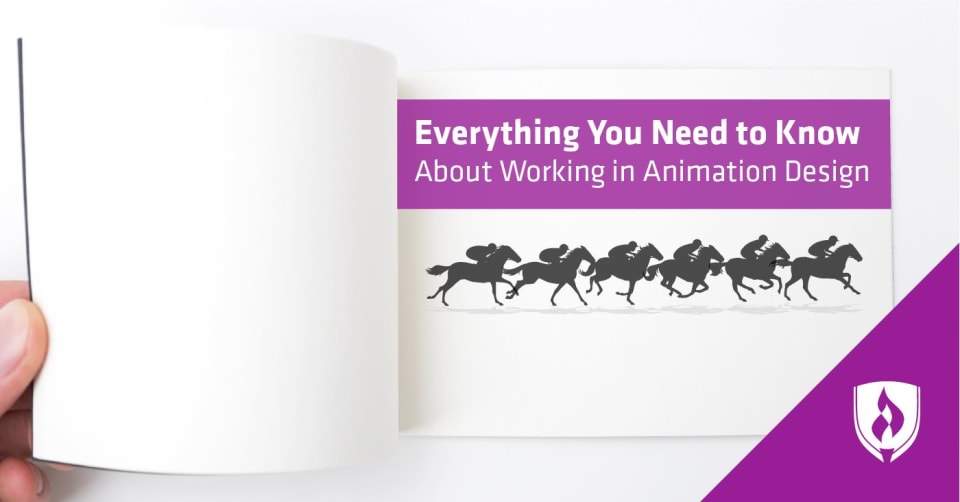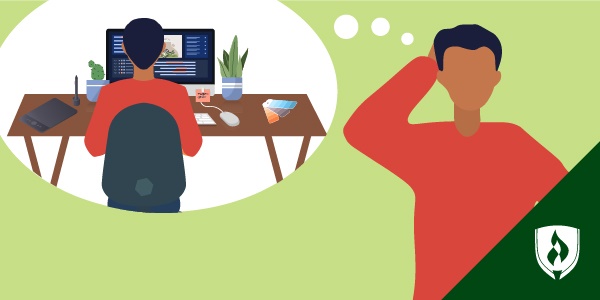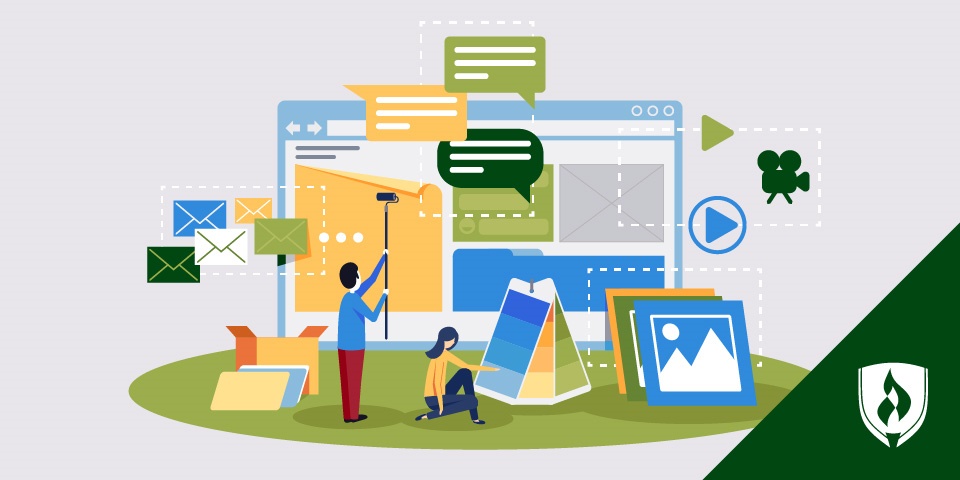
You’ve always been a jack-of-all-trades with a wide variety of interests. Technical skills like learning a new computer program just come easy to you, but you also have a creative streak. From absentmindedly drawing in the margins of your notebook to teaching yourself complex computer programs just for fun, you’ve always found ways to work your unique skills into your daily life.
Unfortunately, you haven’t found anything in the working world that lets you explore your varied interests. You want a career that marries your tech skills with your creative side, but nothing ever seems to fit the bill—until now.
A career in animation design uses the best of technology and design to create everything from special effects in movies and video games to animated cartoons. We’re breaking down the ins and outs of a career in animation design, so you’ll have all the information you need to decide if this is the career for you. Explore how your animation skills can thrive in this exciting field.
What is animation design?
Animation design is the art of creating special effects and other designs for various forms of media, including video games, movies and even social media posts. The Bureau of Labor Statistics (BLS) shares that most animation designers choose a specialty to focus on, such as making animated TV shows or games, creating computer-generated images (CGI), designing settings or background scenes or bringing special effects to life.1
Much of an animation designer’s work is done with specialized computer software, and some even write their own code! Animation design definitely requires some technical know-how, but there’s also plenty of room for hands-on design work to exercise your creative muscles. Some animators will first draw or paint their designs before transferring them to a digital format, while others use models to visualize the movement of a particular animation.
What do animation designers do?
You might have guessed that animation designers can be responsible for a wide variety of tasks depending on their workplace and their design specialty. Designer and motion graphics artist Crissy Bogusz can attest to this variety in her work creating animated videos for her employer’s Snapchat channel. “I design and animate the graphics, as well as edit video, work with typography and kinetic text, edit and source great audio and manage freelance designers.”
But that’s just a portion of an animation designer’s duties. The U.S. Department of Labor also reveals the diversity of tasks available in this unique field. These are just some of the job duties you may encounter as an animation designer:2
- Create storyboards that demonstrate the flow of the animation
- Use models to simulate the behavior of animated characters
- Draw images to be scanned into various computer programs
- Participate in the design of media campaigns
- Create 2D and 3D images using computer animation
A career as an animation designer may look different from person to person, but one aspect remains consistent: the importance of teamwork. The BLS shares that animation designers often work on a team where they are responsible for a portion of the work before all the pieces are brought together in a final product.1 This can be a challenging undertaking for large projects—the look and feel must remain consistent no matter who is animating, which makes communication key.
Where do animation designers work?
Movies and video games may be your first thought when it comes to animating special effects, but work environments go far beyond Hollywood graphics studios. “Most companies have an increasing need for animated videos within their marketing—especially for social media posts and social media advertising. Animation has become a key force in any modern business,” Bogusz says.
Animation designers are a necessary part of nearly every industry in this digital age. The BLS reports that industries from software publishers to advertising and PR firms are hiring animation designers. There’s also a large sector of animation designers who work as self-employed freelancers—about 59 percent, according to the BLS. These animators typically meet deadlines while keeping flexible schedules and working remotely.1
What is the job outlook for animation designers?
With animation professionals working everywhere from huge Hollywood design studios to tiny self-owned businesses, it shouldn’t come as a surprise there’s a positive job outlook. This expanding career is keeping pace with the average rate of job growth across America. The BLS estimates animation design jobs will see an eight percent increase from 2016–2026, which is as many as 6,200 new jobs.1
What skills and qualities do animation designers need?
This field may seem heavy on technology at first glance, but don’t underestimate the importance of your creative side. “The technical skills can be learned through training, but a strong sense of creativity is needed to put these technical skills together to create something memorable and award-worthy,” Bogusz says.
We used the latest data from Burning Glass to pinpoint the most in-demand skills for animation designers.3
| Top technical skills for animators | Top transferable skills for animators |
|---|---|
| Adobe Creative Cloud ™ Software | Creativity |
| UX wireframes | Communication |
| Graphic design | Editing |
| Interaction design | Organization |
| Prototyping | Problem-solving |
| UI designing | Writing |
| User research | Attention to detail |
| 3D modeling | Presentation skills |
How do you become an animation designer?
The road to an animation design career most likely begins with a Bachelor’s degree in a related field, such as Animation, Computer Graphics or Graphic Design, according to the BLS.1 An overwhelming 87 percent of the job postings we analyzed required their animators to hold a Bachelor’s degree, according to data from Burning Glass.3
Earning a degree will give you many of the technical skills you need, but your creative vision also plays a part in standing out to employers. Animation designers will need to build and display a portfolio of their past work to showcase their artistic style to prospective employers. You’ll want to show some versatility—but don’t be afraid to really dig in and build your expertise in a certain animation style.
Design your future
Now that you know animation design is the perfect blend of technical and creative skills, does it sound like an appealing career for you? If so, you might be wondering what your first step should be. Curious about other jobs you can have in animation? Check out how to become a visual effects artist.
The simple answer is to start refining your abilities as a designer. Earning a Bachelor’s degree is a great way to gain the technical skills you need to succeed in animation design. Check out Rasmussen College’s Graphic Design degree with a specialization in Animation and Motion Graphics—it could be the right program to take you there!
1Bureau of Labor Statistics, U.S. Department of Labor, Occupational Outlook Handbook, [information accessed July 9, 2018] www.bls.gov/ooh/. Employment conditions in your area may vary.
2 Bureau of Labor Statistics, U.S. Department of Labor, Occupational Employment Statistics, [salary data accessed July 9, 2018] www.bls.gov/oes/.
3 Burning-Glass.com (analysis of 5,747 animator job postings, June 01, 2017 – May 31, 2018).




